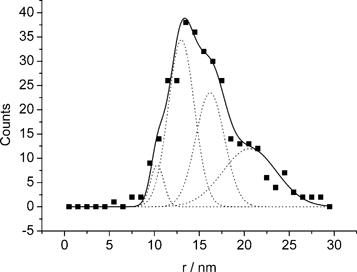Nanoparticles might be small but they frequent the pages of many a journal due to the ongoing boom in nanotechnology research. Whilst they are useful in a myriad of fields, it is still difficult to directly characterise these extraordinarily small entities. King among the visualisation techniques is electron microscopy but this often requires the isolation of the sample on a support – hardly sufficient for analysing a dynamic sample in solution! Dynamic light scattering is another potential technique but finds limitations when it comes to much smaller nanoparticle sizes.
Ideally, you want to be able to count and size individual nanoparticles at a rate which produces reliable statistics. To address this challenge, Richard Compton and his team, including Neil Rees and Yi-ge Zhou who conducted the experiments alongside Jeseelan Pillay, Robert Tshikhudo and Sibulelo Vilakazi from Mintek, Randburg, have used anodic particle coulometry (APC) to measure gold nanoparticle collisions with a glassy carbon microelectrode and thus count and size individual nanoparticles.
With the electrode potential set above +1.0 V, they were able to record oxidative Faradaic transients from nanoparticle collisions and calculate an average nanoparticle radius which compared extremely well to the radius obtained from scanning electron microscopy measurements. They were also able to observe nanoparticle aggregation, which holds great promise for monitoring dynamic aggregation reactions.
It shouldn’t be long before this technique is routinely used to gain more information on all sizes of metallic nanoparticles which are currently being used in a variety of applications.
Read the ChemComm article by Compton and team for more.
Posted on behalf of Iain Larmour, web science writer for ChemComm.











